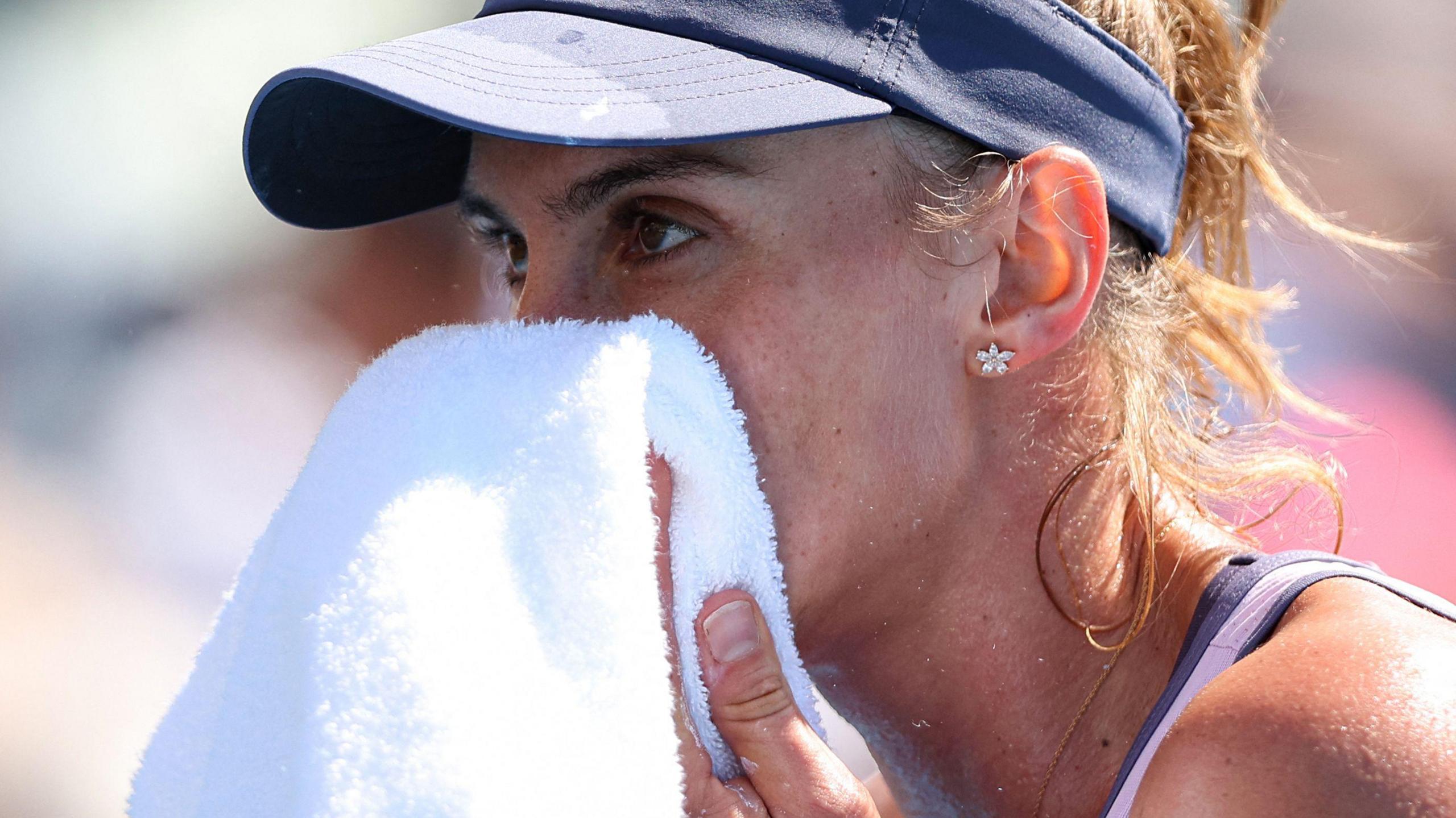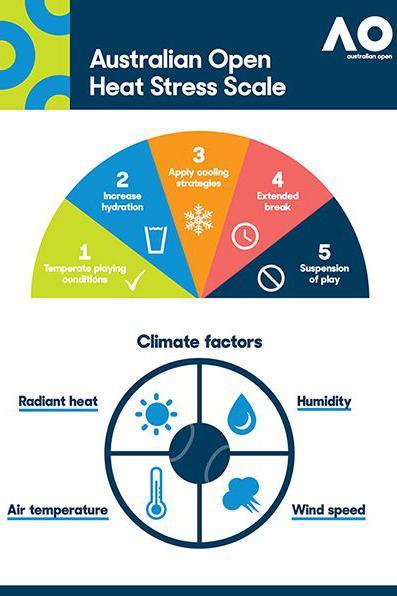When does it get too hot to play tennis?

Temperatures in Melbourne can hit 40C during the Australian Open
- Published
Gael Monfils once said he was "dying on court". Daniil Medvedev has previously called the conditions "brutal".
It's the middle of summer in Melbourne and the ice packs and cold towels are out for players at the Australian Open.
On Sunday, temperatures reached 34C.
But at what point do the conditions become unplayable, and a risk to players' health?
That's where the Australian Open Heat Stress Scale comes in.
What is the Australian Open heat stress scale?
The Australian Open updated its extreme heat policy (EHP) in 2019, after conducting research into the effects of heat stress on tennis players., external
This research led to the development of the heat stress scale (HSS), which is used to decide when the conditions get too challenging, and when players' health could be at risk.

The Australian Open Heat Stress Scale was the first of its kind to be used at a Grand Slam, in 2019
The scale measures four factors:, external radiant heat (or the strength of the sun), air temperature in the shade, relative humidity and wind speed.
These factors are measured at various points around Melbourne Park, where the Australian Open is played.
When the scale hits '5', play will be suspended.
What else is in place to protect players?
Beyond a certain threshold players are allowed additional breaks.
When the HSS reaches '4' - before or during the first two sets of a match - women and junior players will be given an additional 10-minute break, and wheelchair singles players a 15-minute break, between the second and third sets.
For men's singles matches, which are best-of-five sets, a 10-minute break is added after the third set.
Who decides when it gets too hot?
The tournament referee will consult the HSS and decide when to award extra breaks, or when to suspend matches.
If matches are already in play, the referee can suspend them once an even number of games have been played in a set, or after a tie-break has finished.
Is there air conditioning?
Yes - there are air conditioning systems in the Rod Laver Arena, Margaret Court Arena and the John Cain Arena.
These three courts have retractable roofs that can be closed in the case of bad weather.
The tournament referee can decide to pause the match and close the roof, allowing play to continue in extreme heat or wet weather.
How quickly can conditions change?
The phrase 'four seasons in one day' is often used to describe the conditions in Melbourne - they're notoriously changeable.
The 2025 tournament has already featured sunny skies, torrential rain and thunderstorms, which caused play on outside courts to be suspended on day one.
Temperatures can often fluctuate between 30C and 40C during the day, but can drop into the mid-to-low teens for the evening sessions.
In 2014, Melbourne had three consecutive days with temperatures above 40C.
The shifting weather patterns are largely due to Melbourne's position on the southeastern coast of Australia, at the meeting point of contrasting hot and cold air masses.
Meteorologist and BBC weather presenter Simon King says that "on the coastal south of Victoria, Melbourne is in a position where the wind direction makes all the difference to the weather.
"During the summer months, a wind coming in from the north can be very warm, if not hot. These northerly winds transport the hot air from the interior desert of Australia where temperatures can easily be more than 40C.
"But, should the wind change to a more southerly direction, cooler and moister air is drawn in from the Southern Ocean.
"Warm and cold air don't like to mix, so when you get these contrasts in temperature it can be a recipe for big thunderstorms to develop with hail and gusty winds."
Do other Grand Slams have heat policies?
Each Grand Slam has a slightly different way of deciding when to enforce any heat policies.
The heat rule used at the Wimbledon Championships, external is based on the 'wet bulb global temperature' - a measure of heat stress.
When this is at or above 30.1C, a 10-minute break will then be added between certain sets, which can be requested by the players.
The US Open has a similar strategy, allowing 10-minute breaks between sets three and four for the men's singles, and then between sets two and three for the women's and juniors.
The roof of the Arthur Ashe Stadium and the Louis Armstrong Stadium will also be partially shut in extreme conditions, as part of new policies adopted last year., external
The French Open was the last Grand Slam to add a retractable roof to one of its courts, the Philippe Chatrier, in 2020.